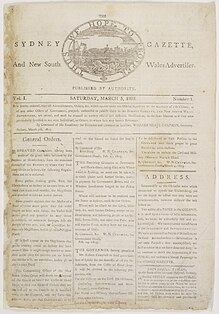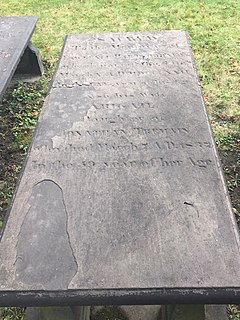
The Sydney Gazette and New South Wales Advertiser was the first newspaper printed in Australia, running from 5 March 1803 until 20 October 1842. It was an official publication of the government of New South Wales, authorised by Governor King and printed by George Howe. On 14 October 1824, under the editorship of Robert Howe, it ceased to be censored by the colonial government.

Fourah Bay College is a public university in the neighbourhood of Mount Aureol in Freetown, Sierra Leone. Founded on 18 February 1827, it is the oldest university in West Africa and the first western-style university built in West Africa. It is a constituent college of the University of Sierra Leone (USL) and was formerly affiliated with Durham University (1876–1967).

The Swindon Advertiser is a daily tabloid newspaper, published in Swindon. The newspaper was founded in 1854, and had an audited average daily circulation at the end of 2017 of 8,828.

Media in Sierra Leone began when the first modern printing press in Africa arrived at the start of the 19th century. In the 1860s the country became a journalist hub for Africa with professional travelling to the country from across the continent. At the end of the 19th century the industry went into decline and when radio was introduced in the 1930s this became the primary communication media. Print media is not widely read in Sierra Leone, especially outside Freetown, partially due to the low levels of literacy in the country. In 2008 there were 15 daily newspapers in addition to those published weekly. Among newspaper readership young people are likely to read newspapers weekly and older people daily. The majority of newspapers are privately run and are often critical of the government.

The chiefdoms of Sierra Leone are the third-level units of administration in Sierra Leone. There are 190 chiefdoms in Sierra Leone, as of 2017. Previously, there were 149.

Education in Sierra Leone is legally required for all children for six years at primary level and three years in junior secondary education, but a shortage of schools and teachers has made implementation impossible. The Sierra Leone Civil War resulted in the destruction of 1,270 primary schools and in 2001 67 percent of all school-age children were out of school. The situation has improved considerably since then with primary school enrollment doubling between 2001 and 2005 and the reconstruction of many schools since the end of the war.

The subdivisions of Sierra Leone are as follows:
HMS Pilchard was a Royal Navy Ballahoo-class schooner of four 12-pounder carronades and a crew of 20. The prime contractor for the vessel was Goodrich & Co., in Bermuda. She was commissioned under Lieutenant Samuel Crew in May 1804, launched in 1805, and completed at Plymouth in 1806. Although Pilchard was often near naval engagements, she seems not to have had to fire her cannons before she was laid up in 1812. Entries in Lloyd's Register indicate that she continued in mercantile trade from at least 1817 until 1833, under a variety of owners and masters, and as far afield as Africa and Valparaiso.

The Supreme Court of Sierra Leone is the highest court in Sierra Leone. It has final jurisdiction in all civil, criminal, and constitutional cases within Sierra Leone, and its decisions cannot be appealed. The Supreme Court has the exclusive constitutional power to overturn ruling of lower courts within the jurisdiction of Sierra Leone. The Supreme Court, along with the Court of Appeals, High Court of Justice, and magistrate courts form the Judicial branch of the Government of Sierra Leone.
The Sri Lanka Gazette, officially The Gazette of the Democratic Socialist Republic of Sri Lanka, (Sinhalese: ශ්රී ලංකා ප්රජාතාන්ත්රික සමාජවාදී ජනරජයේ ගැසට් පත්රය, translit. Shrī Laṁkā Prajātāntrika Samājavādī Janarajayē Gæsaṭ Patraya; Tamil: இலங்கை ஜனநாயக சோசலிச குடியரசின் வர்த்தமானி, translit. Ilaṅkai Jaṉanāyaka Cōcalica Kuṭiyaraciṉ Varttamāṉi) is a public journal of the Government of Sri Lanka. It prints certain statutory notices from the government. Modeled after the Oxford Gazette, the Sri Lanka Gazette is the oldest surviving newspaper in Sri Lanka, having been published continuously since 1802. Unlike other newspapers, it does not cover general news or have a large circulation. It is printed by the Department of Government Printing.
The following is a timeline of the history of the city of Freetown, Sierra Leone.
Hadlow was a merchant sailing ship built in 1814 at Quebec, British North America. She made two voyages transporting convicts from England and Ireland to Australia. She plied between England, India, and Sierra Leone before being lost with all hands in 1823.

The Albany Advertiser, also published as the Australian Advertiser and the Albany Advertiser and Plantagenet and Denmark Post, is a biweekly English language newspaper published for Albany and the Great Southern region in Western Australia.
Major Henry John Ricketts was an English soldier and administrator who served in the Royal African Corps in British West Africa.
Peter Machlan was a Scottish doctor who served as Assistant Staff Surgeon of the 2nd Regiment of the West India Regiment. Whilst serving in Sierra Leone, he was sent by the governor, Charles MacCarthy to the Iles de Los, for his health. He was also requested to write a report on the area, in which connection he made three trips to the mainland of what is now Guinea, in particular he covered the areas around Rio Nunez, Rio Pongo and the Fatala River. His report Travels into the Baga and Soosoo country during the year 1821 was first published in the Royal Gazette and Sierra Leone Advertiser, October–November 1821. These instalments were then gathered to gether in a single book published in Freetown, Sierra Leone, this being perhaps the first monograph published in Sub-Saharan Africa.
Sir Alexander Grant was a British Army officer who served as the first Commandant of St Mary's Island from 1816 to 1826.










